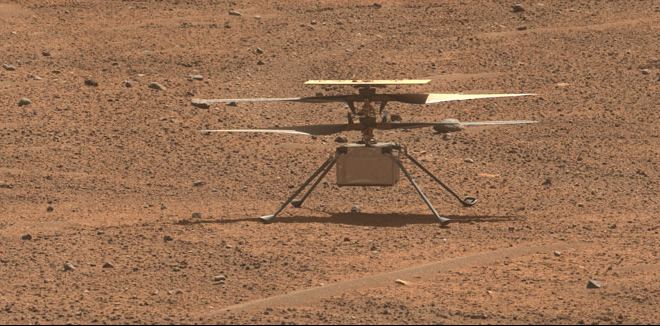Space exploration is always changing. Before February 2021 there had never been a human made craft flying around in the atmosphere of another world (other than rocket propelled landers arriving or departing). The Mars Perseverance rover changed that, carrying with it what can only be described as a drone named Ingenuity. It revolutionised planetary exploration and now, China are getting in on the act with a proposed quadcopter for a Mars sample return mission.
Our exploration of Mars has generally been limited to orbiters, landers and rovers. The orbiters are fantastic at getting planet wide data or data covering huge swathes of land and the landers are great at getting surface detail, even analysing surface material. The rovers added an extra dimension by being able to explore the landing area but generally, the rovers were slow and unable to traverse significant distances. They were also unable to move over very uneven terrain giving them limited capability.

When Perseverance landed it took with it the Ingenuity drone or more correctly it was classed as a helicopter. Its wingspan was 1.2m from tip to tip of the rotor blades and weighed in at 4 pounds (although on Mars it weighed 1.5 pounds). Whilst its range was only 300m it proved it could be done and since its deployment has completed 66 flights, covering a total of 14.9km.
A paper recently published by the Harbin Institute of Technology and the China Academy of Space Technology proposed a quadcopter for use on Mars that would, unlike Ingenuity, be capable of collecting a sample weighing up to 100g and return it to the lander. The key challenge to achieve this is the rarefied nature of the Martian atmosphere. It is less than 1% of that on Earth and as a result, the lift generated by a rotor blade is significantly lessened. To enable sufficient lift, the blades are oversized by Earth standards.
Alternative solutions to drones were explored from earlier designs like the aeroplane based ‘Astroplane’ with a wingspan of 21m or the ‘MAP MarsFlyer’ with a wingspan of 1.73m. Both styles were discounted due to construction availability of take off and landing areas. The team concluded rotorcraft were the correct configuration and set themselves to design something that could retrieve and transport samples for return missions to Earth.
The paper provides detailed design schematics of both flight (including autonomous flight) systems, rotor configuration, mechanical arm, imaging technology and the avionics system. The described MarsBird V11 is very much just on the drawing board at the moment and is not slated for any mission yet but it is exciting to think the future of Mars exploration is from the Martian air.
Source : A Mars quadcopter capable of autonomous flight and sample collection: Structure and avionics

